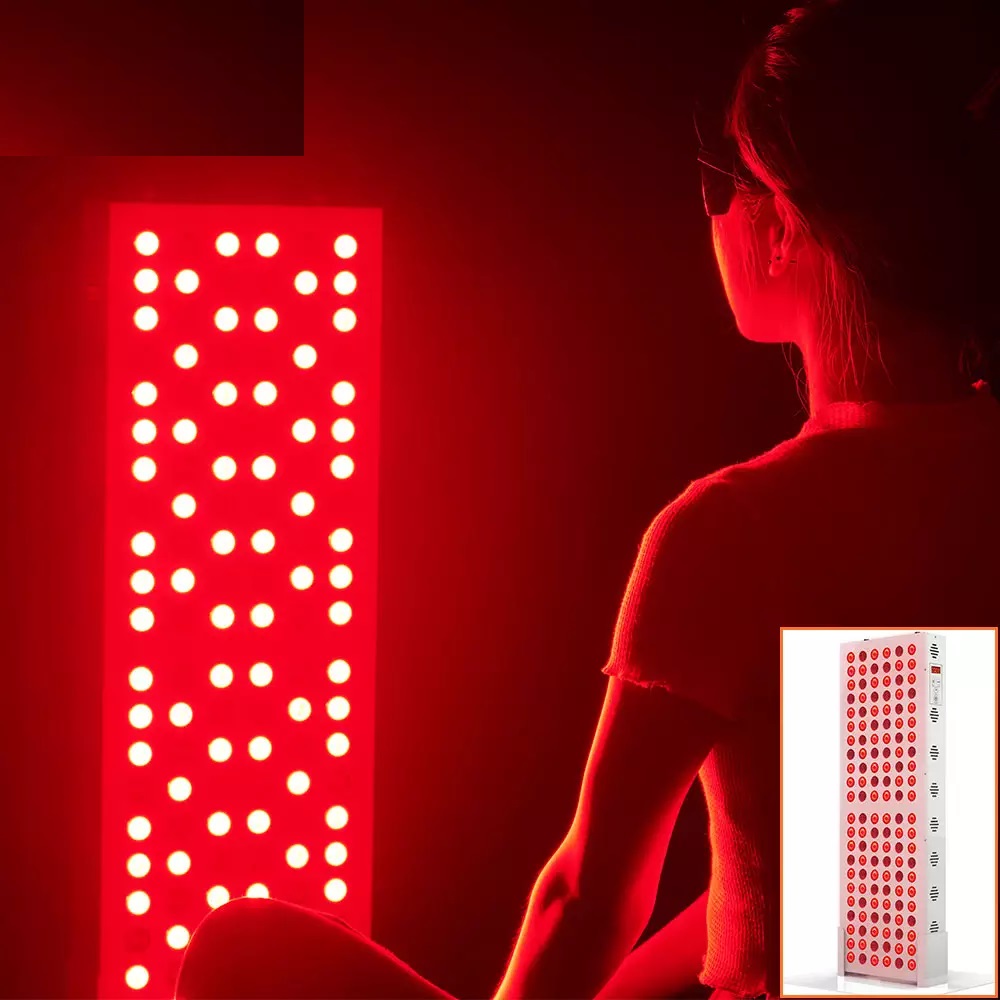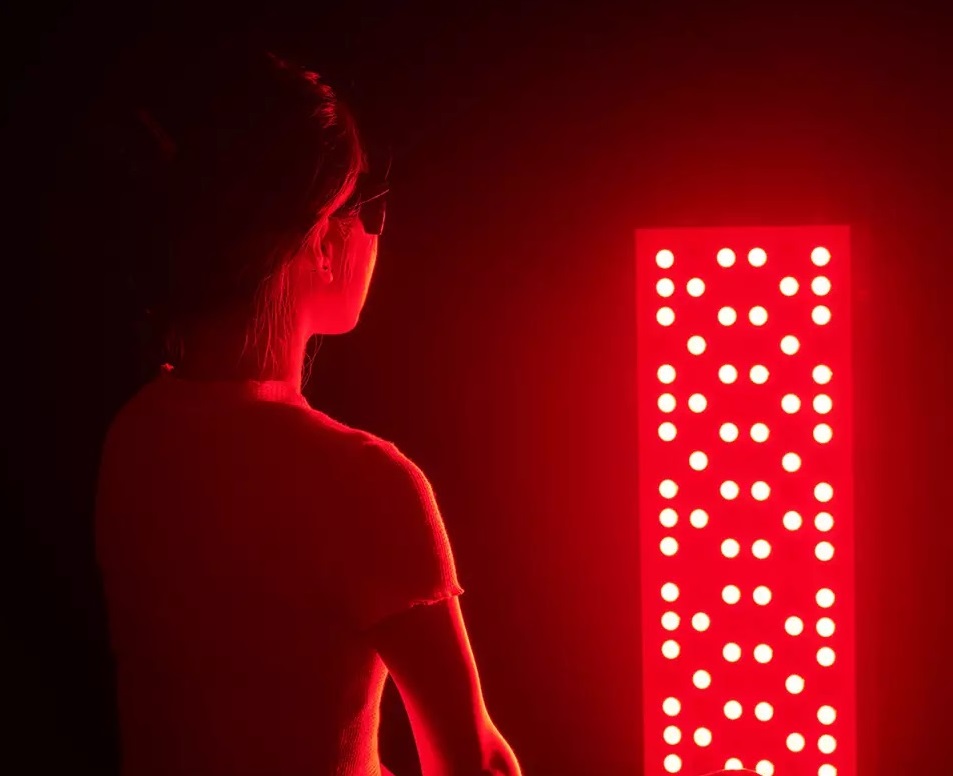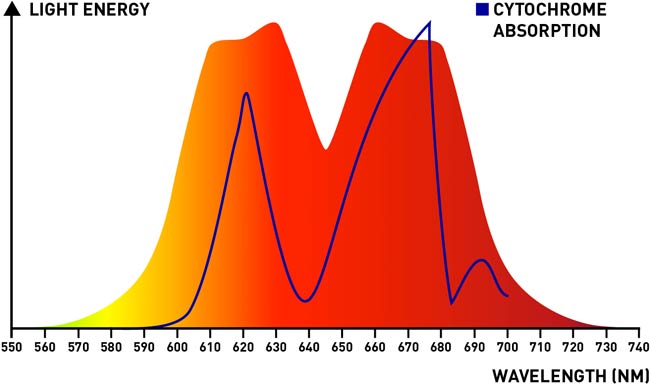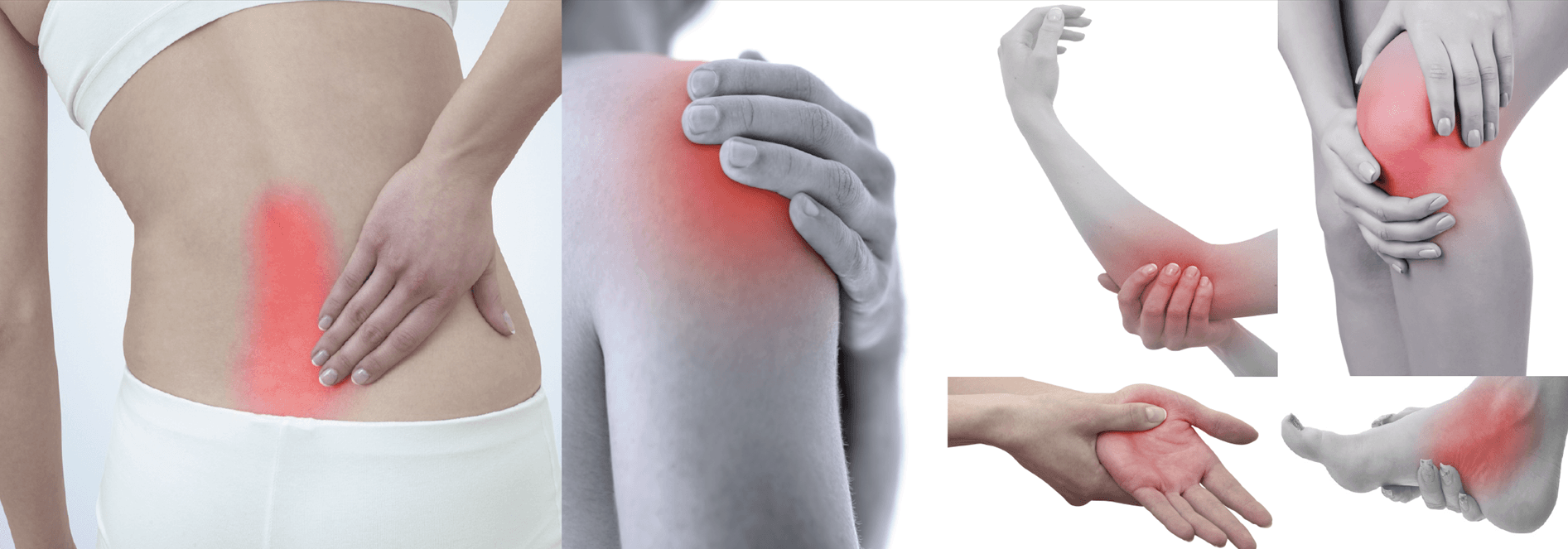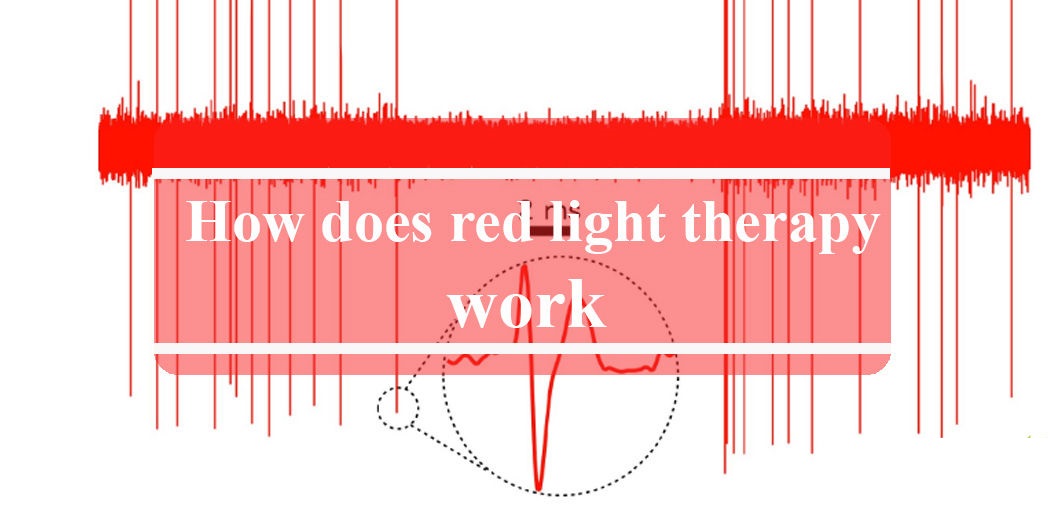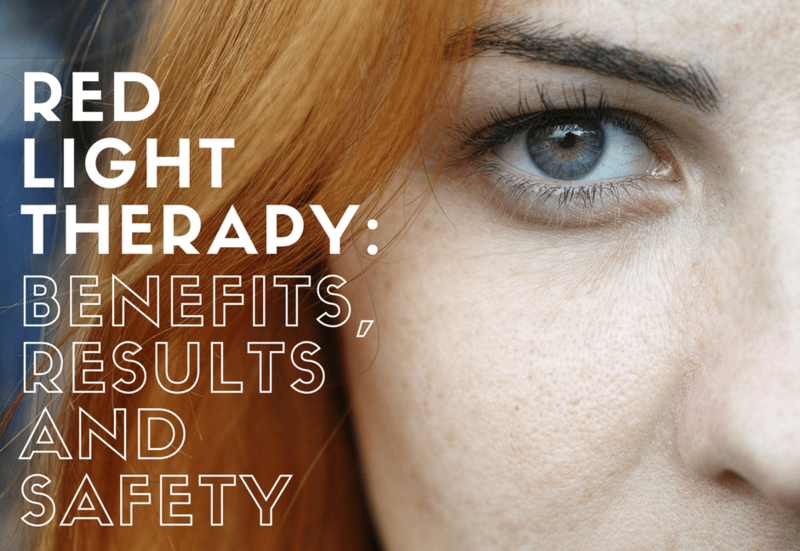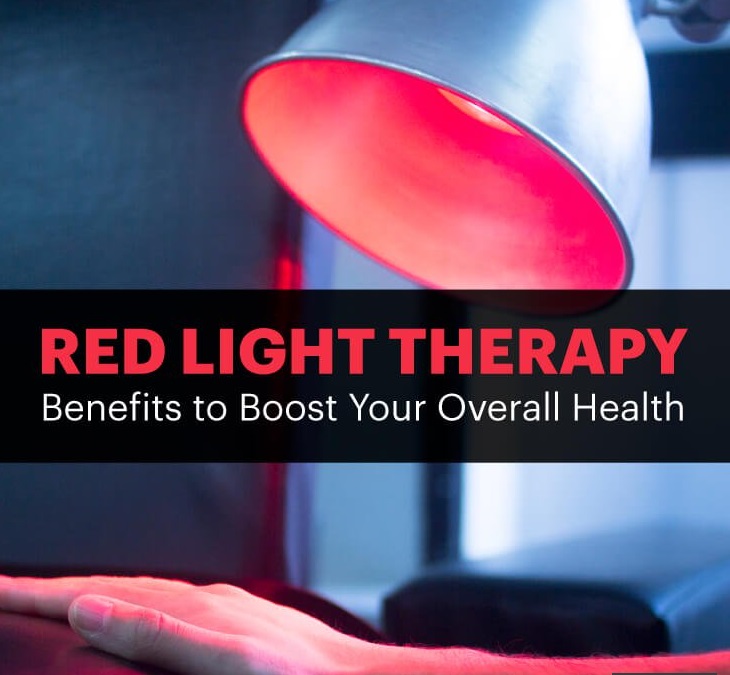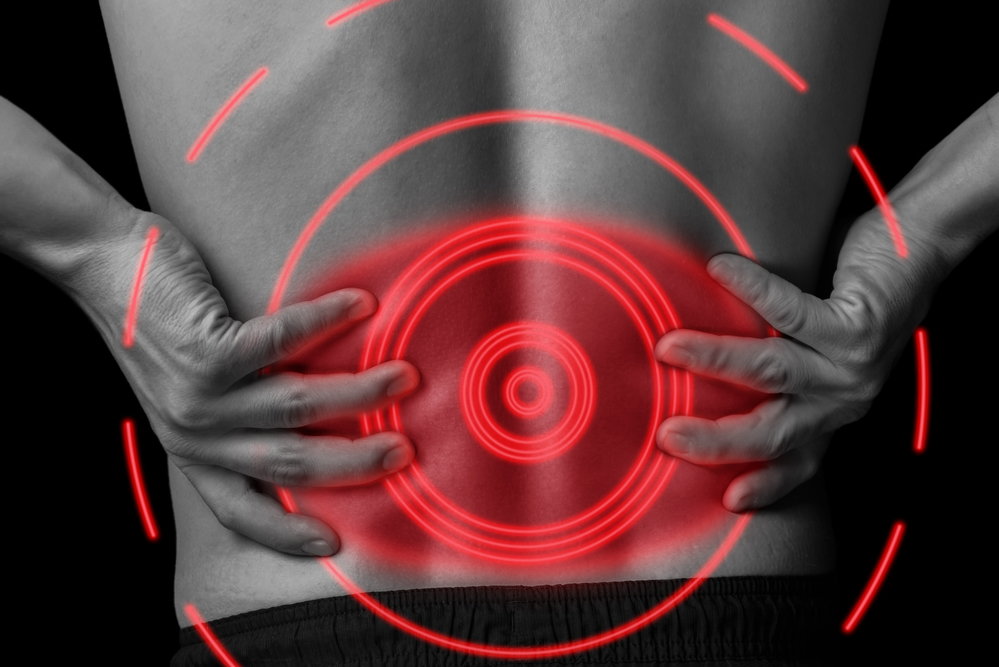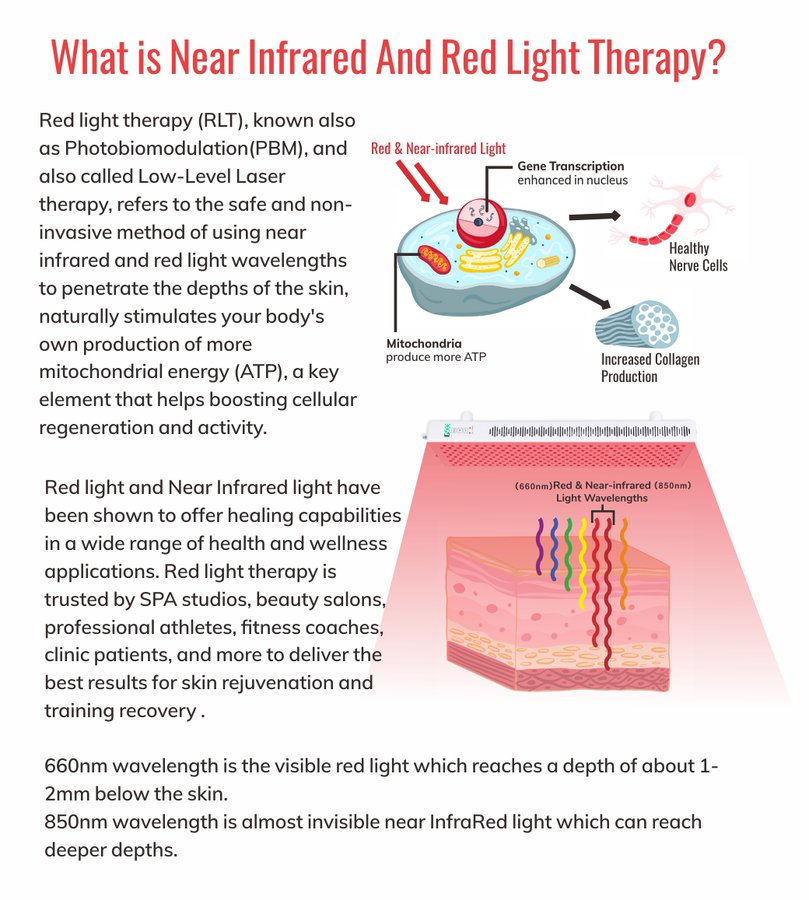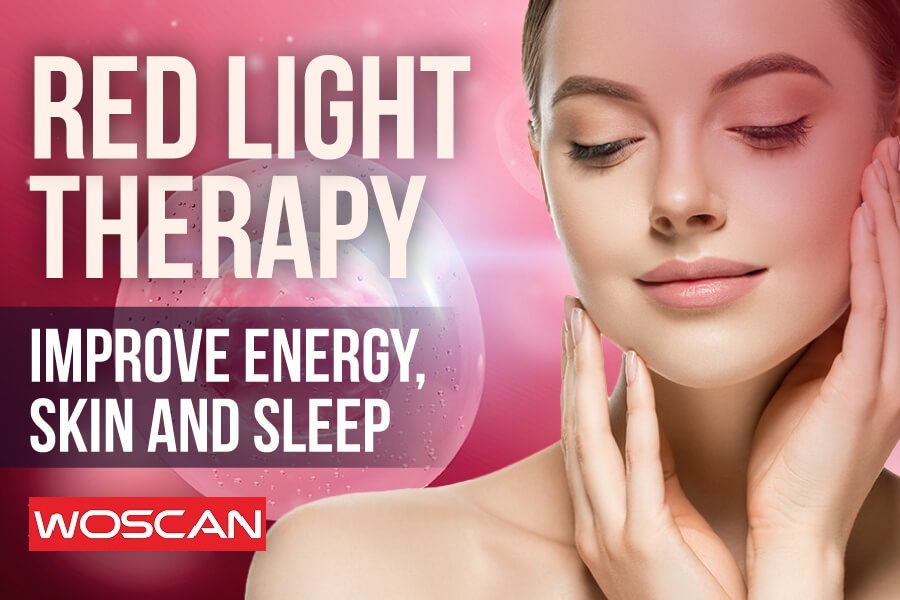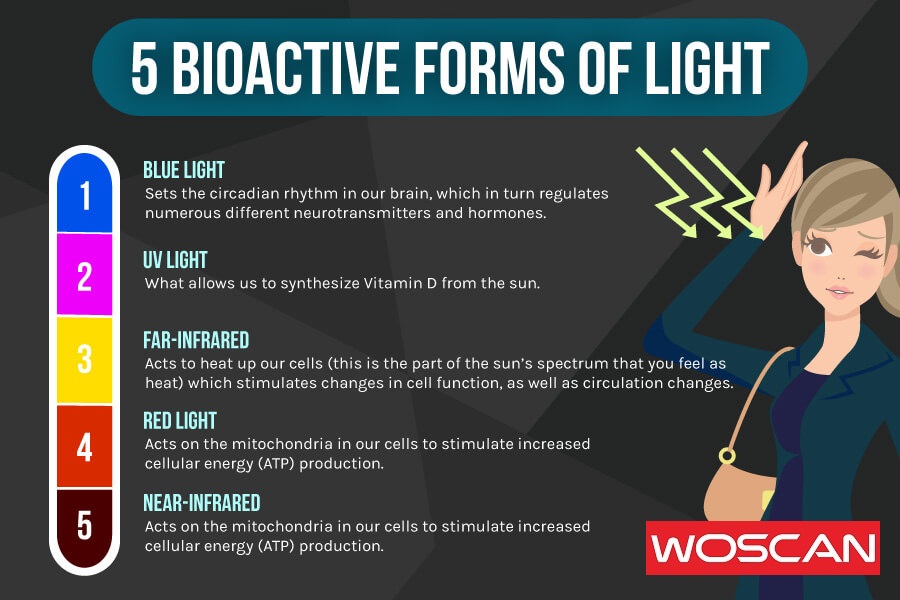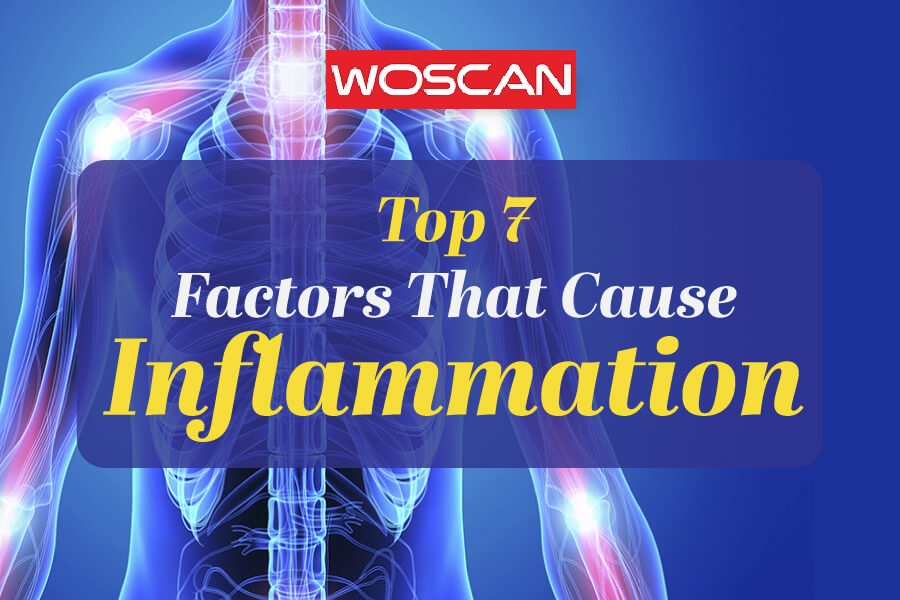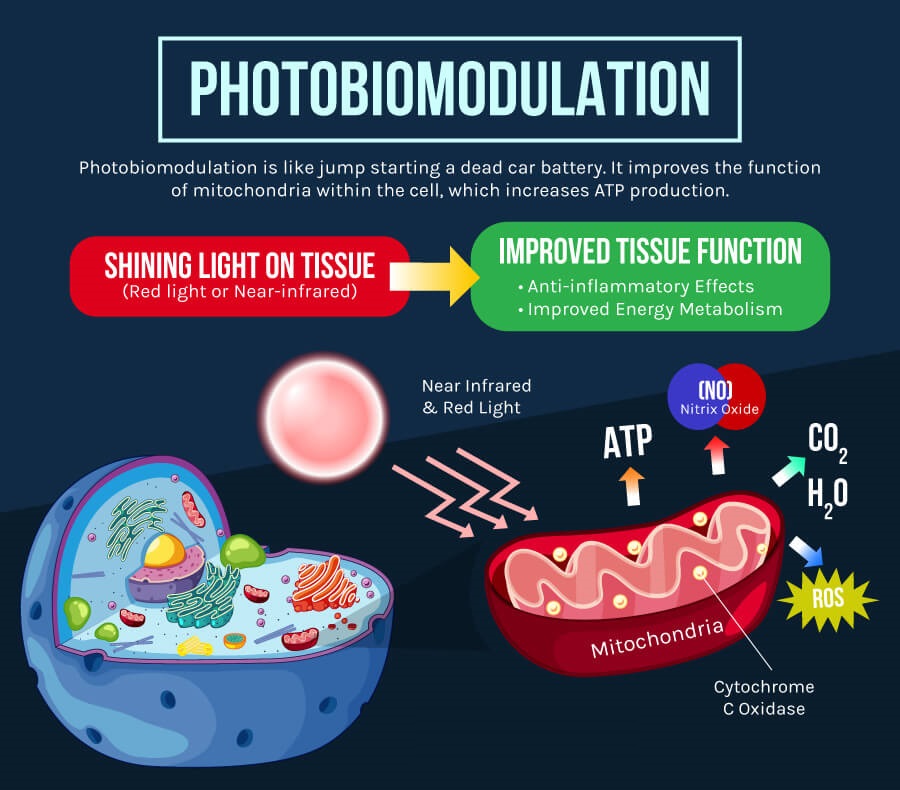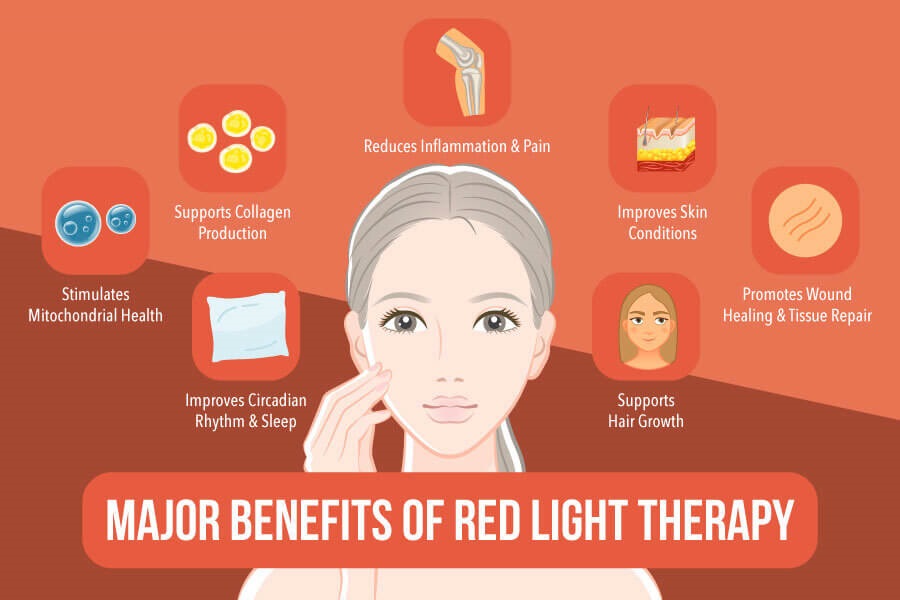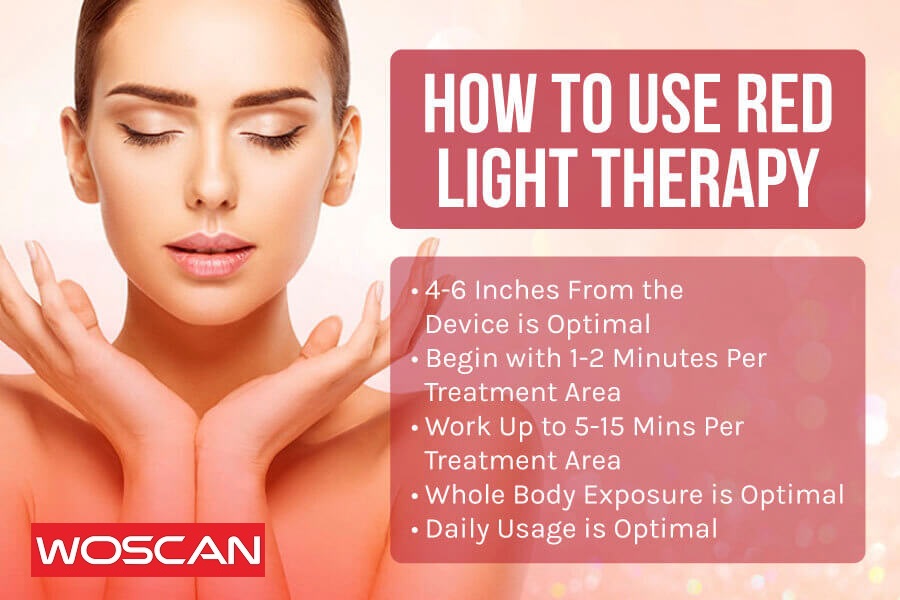
In today’s age of information, we often come across innovative solutions that promise to combat the effects of aging and environmental damage. One such promising solution is Red Light Therapy (RLT). Rooted in science and backed by numerous studies, RLT has emerged as a popular approach to counteract the detrimental effects of sun damage.
Sun damaged skin, largely caused by UV exposure, is an escalating concern for many, leading to visible signs of premature aging and other skin concerns. In this article, we’ll delve deep into the world of RLT, exploring its potential to address and decreasing the effects of sun damage on our skin. Whether you’re new to the concept or have heard passing mentions, we aim to provide a comprehensive understanding of how RLT might be the ally your skin has been seeking against the relentless sun.
Understanding Sun Damage
Before delving into the potential benefits of Red Light Therapy for sun damage, it’s crucial to first understand the intricacies of sun damage itself.
When our skin is exposed to the sun, especially during peak UV (ultraviolet) hours, it absorbs these rays. While we often associate a sun-kissed tan with good health and vitality, in reality, that tan is your skin’s defense mechanism against harmful UV rays. Two primary types of UV rays affect our skin:
- UVA rays: These rays penetrate deep into the dermis, the skin’s thickest layer. Prolonged exposure can lead to premature skin aging and the onset of more dire skin health concerns.
- UVB rays: Primarily responsible for sunburn, these rays affect the skin’s superficial layers. Over time, repeated exposure can lead to various skin issues and increase the risk of certain skin conditions.
On a cellular level, sun exposure can cause DNA damage in skin cells. This DNA damage can lead to mutations if not properly repaired, which in turn can increase the risk of skin cancers, including melanoma. Furthermore, UV exposure stimulates the production of free radicals in the skin. These unstable molecules can damage cells, proteins, and DNA, accelerating the aging process.
The external signs of sun damage are numerous, ranging from the appearance of freckles, sunspots, and hyperpigmentation to reduced skin elasticity, resulting in wrinkles and fine lines. Additionally, the skin can become rough, dry, and uneven in texture.
The dangers of prolonged UV exposure extend beyond aesthetics. Beyond the visible signs of aging, the skin can also develop more serious conditions like actinic keratoses, which are precancerous growths, and various forms of skin cancer.
Understanding the depth and extent of sun damage underscores the importance of not only preventive measures but also exploring advanced modalities like Red Light Therapy that offer a potential reprieve from the harmful aftermath of sun exposure.
Basics of Red Light Therapy
As we journey further into our exploration of Red Light Therapy (RLT), it’s essential to first establish a foundational understanding of what this modality is and how it differentiates from other light-based approaches.
At its core, Red Light Therapy involves the use of low-level wavelengths of red light. Unlike tanning beds, which produce UV rays known to cause skin damage, RLT uses wavelengths that are considered both safe and beneficial for the skin. Historically, the origins of RLT can be traced back to the early 1990s, when NASA utilized it for growing plants in space. They soon found that the same red light had potential benefits for astronauts, including the promotion of wound healing. This discovery paved the way for further research and the eventual application of RLT in skincare and other health domains.
The effectiveness of RLT hinges on its specific wavelengths, which typically fall in the range of 630 to 880 nanometers. These wavelengths penetrate the skin to various depths, delivering energy to the cells. In response, a series of bioactive processes are triggered at the cellular level. One key point to remember is that it’s the depth of this penetration and the biological responses it induces that differentiate RLT from other light-based therapies.
While RLT has gained prominence, it’s essential to recognize that it’s just one type of photobiomodulation. There are other light therapies like blue light therapy, primarily used for treating acne, or near-infrared light therapy, which penetrates deeper than red light and has its own set of benefits. Each light therapy serves distinct purposes and targets different cellular responses.
RLT is more than just a simple red light. It’s a meticulously studied approach backed by science that holds the potential to catalyze a series of beneficial cellular reactions. Its ability to target the aftermath of sun damage, among other skin concerns, sets it apart as a promising solution in the world of skincare. As we progress, we’ll delve deeper into how RLT can be specifically harnessed for the challenges posed by sun damage.
Mechanism of Action: How Red Light Therapy Helps with Sun Damage
Understanding the scientific underpinnings of how Red Light Therapy (RLT) affects sun-damaged skin can provide you with valuable insights into why this approach has been gaining momentum in the skincare arena.
- Photobiomodulation: The cornerstone of RLT is a phenomenon known as photobiomodulation. In simpler terms, this refers to the process by which light energy (photons) is absorbed by cellular photoreceptors and transformed into cellular energy (adenosine triphosphate or ATP). ATP is often dubbed the “energy currency” of the cell, and its increased production stimulates a range of bioactive processes that contribute to cellular repair, regeneration, and rejuvenation.
- Increase in Collagen Production: One of the main bioactive processes triggered by photobiomodulation is an increase in collagen production. Collagen, the protein responsible for skin elasticity and youthful appearance, tends to decrease with age and sun exposure. When RLT is applied, the increased cellular energy production leads to a rise in collagen synthesis. This helps fill sunspots, reducing fine lines, and restoring a more youthful texture to the skin.
- Reduction of Inflammation and Oxidative Stress: The role of RLT isn’t just confined to collagen production; it also extends to the reduction of inflammation and oxidative stress, both significant contributors to sun damage. Inflammation caused by UV exposure can lead to redness, puffiness, and an acceleration of skin aging. Similarly, oxidative stress causes an overproduction of free radicals, unstable molecules that can further damage the skin. RLT helps mitigate these factors by reducing the inflammatory response and enhancing cellular antioxidant capacity, thus providing a multifaceted approach to combating sun damage.
- Cellular Repair: Another beneficial aspect of RLT is its role in promoting the repair of cellular DNA. As we’ve discussed, UV exposure can lead to DNA damage in skin cells, increasing the risk of mutations. RLT has shown promise in reducing this risk by aiding the natural DNA repair processes within the cells.
The mechanism by which RLT addresses sun damage is comprehensive, targeting multiple facets of cellular health. From rejuvenating the appearance of the skin to bolstering its natural defenses against further damage, RLT emerges as a promising solution for those looking to mitigate the impacts of sun exposure.
Benefits of Using Red Light Therapy for Sun Damage
After exploring the science behind Red Light Therapy (RLT) and how it acts on a cellular level, it’s crucial to consider the tangible benefits you can experience, particularly when it comes to sun damage. The wide range of benefits makes RLT a versatile solution for addressing various concerns related to UV exposure. Here are some of the most noteworthy:
REDUCED APPEARANCE OF SUN SPOTS AND HYPERPIGMENTATION:
One of the most common signs of sun damage is the appearance of sun spots and hyperpigmentation. By stimulating collagen production, RLT helps even out skin tone and reduces the visibility of these unwanted blemishes.
IMPROVEMENT IN SKIN TEXTURE AND ELASTICITY:
Over time, sun exposure can make the skin look dull and feel rough. RLT helps improve the skin’s texture by promoting cell regeneration and increasing collagen production. This not only makes the skin smoother but also enhances its elasticity, leading to a more youthful appearance.
HEALING ACCELERATION FOR SUNBURNS:
While preventing sunburn is the best course of action, if you do happen to experience one, RLT can help accelerate the healing process. By reducing inflammation and stimulating tissue repair, RLT helps alleviate the immediate effects of sunburn more quickly than traditional methods.
PREVENTIVE CARE: STRENGTHENING SKIN AGAINST FUTURE UV DAMAGE
Beyond providing immediate benefits, RLT also strengthens the skin’s natural defenses. The anti-inflammatory and antioxidant effects can make your skin less susceptible to future UV damage. While RLT is not a replacement for sunscreen or other preventive measures, it acts as a supplemental approach to boost your skin’s resilience.
ENHANCED OVERALL SKIN HEALTH:
Beyond the specific benefits related to sun damage, users often report a noticeable improvement in overall skin health. This includes increased hydration, reduced redness, and an overall “glow” that many find desirable.
HOLISTIC APPROACH TO SKIN CARE:
RLT does not rely on chemicals or invasive procedures, making it a holistic option that complements other skincare practices. This is particularly useful for those who prefer a more natural approach to skin care or have sensitivities to certain topical products.
In summary, the benefits of using RLT for sun damage are both immediate and long-term. From cosmetic improvements to preventive health advantages, RLT offers a comprehensive solution for those looking to tackle the visible and hidden aspects of sun damage.
Clinical Studies and Evidence
While the anecdotal benefits of Red Light Therapy (RLT) are compelling, it is always critical to examine the scientific evidence supporting its effectiveness, particularly in the realm of sun damage. Various studies have been conducted to assess how RLT can impact cellular health and improve the skin’s appearance and function.
“Low-level laser (light) therapy (LLLT) in skin: stimulating, healing, restoring”
This study is particularly noteworthy for its comprehensive examination of the effects of low-level light therapy, a category that includes RLT. The authors concluded that, “LLLT appears to have a wide range of applications of use in dermatology, especially in indications where stimulation of healing, reduction of inflammation, reduction of cell death and skin rejuvenation are required.” [1] This aligns well with what we’ve discussed about RLT’s mechanisms of action, namely its ability to promote healing, reduce inflammation, and rejuvenate the skin, making it a viable approach to tackling sun damage.
“The Efficacy of Photobiomodulation Therapy in Improving Tissue Resilience and Healing of Radiation Skin Damage”
While this study focused on radiation skin damage, its findings are relevant when discussing the impact of UV radiation from sun exposure. The study found that, “Radiation exposed tissues had improved functional parameters such as vascular perfusion, reduced inflammation, and metabolic derangement following PBM therapy.” [2] PBM (Photobiomodulation) therapy, which includes RLT, thus shows promise not only in mitigating the immediate effects of radiation but also in enhancing the tissue’s resilience against future damage.
Scientific studies and real-world evidence suggest that Red Light Therapy holds significant promise in addressing various aspects of sun damage. Its ability to stimulate healing, reduce inflammation, and promote skin rejuvenation makes it a compelling option for those looking to improve the health and appearance of their skin.
Choosing the Right Red Light Therapy Device
Selecting the right Red Light Therapy (RLT) device is a crucial step in your journey to combating sun damage effectively. With a myriad of options available in the market, it’s easy to feel overwhelmed. In this section, we will guide you through key factors to consider when choosing an RLT device tailored to your specific needs.
Wavelength Range: Arguably the most important factor, the device you choose should emit light in the wavelength range proven effective for skin health. Generally, this falls between 630 and 880 nanometers. Check the product specifications to ensure it aligns with this criterion. For a comprehensive list of wavelengths and health benefits, you may visit our Red Light Wavelengths page.
Intensity and Power Output: Intensity, often measured in milliwatts per square centimeter (mW/cm²), is another essential consideration. A device with a higher intensity will typically require shorter treatment times. However, more isn’t always better; consult the manufacturer’s guidelines and your healthcare provider to determine what’s appropriate for your skin type and condition. To make it easier to calculate session times, visit our Red Light Dosing Calculator.
Treatment Area Size: Depending on your needs, you might opt for a full-body panel, a half-body panel, or a handheld device. Full-body panels are ideal for those looking to treat multiple areas at once, while handheld units are excellent for targeted treatment. Your lifestyle, available space, and the areas you wish to focus on will dictate the most suitable option.
Quality and Safety:
- Look for devices that are FDA-cleared.
- The device should have a well-designed, durable construction, preferably with a warranty.
Price and Budget: While it’s tempting to opt for the least expensive device, remember that you often get what you pay for. Balance your budget considerations against the quality and features of the device. Sometimes, investing a bit more upfront can yield better long-term results and safety.
Portability and Ease of Use: If you travel frequently or have limited space, a compact, portable device may be more suitable. On the other hand, a more extensive setup might be preferable for home use, where you can create a dedicated space for your RLT sessions.
After-Sales Support: Quality customer service and after-sales support can make a significant difference, especially if you’re new to RLT. Companies that offer solid customer support, easy warranty, and educational resources should be high on your list.
By carefully considering these factors and consulting with healthcare providers as needed, you can make an informed decision about which RLT device is right for you. This will ensure that you’re not only addressing sun damage effectively but also doing so in a safe and efficient manner.
Sun damage is a pervasive concern that impacts nearly everyone at some point in their lives. While preventive measures like sunscreen and protective clothing are essential, they are often not enough to reverse the existing damage. This is where Red Light Therapy (RLT) comes into play. Grounded in scientific research and bolstered by real-world testimonials, RLT offers a compelling and effective approach to address various aspects of sun damage, from reducing hyperpigmentation to enhancing skin resilience.
We’ve delved into how RLT works on a cellular level to stimulate healing, reduce inflammation, and promote skin rejuvenation. We’ve also guided you through selecting the appropriate RLT device, how to use it effectively, and additional skincare tips to optimize your results.
Remember, the key to successful RLT is consistency and proper usage. Consult healthcare providers, adhere to manufacturer guidelines, and stay updated with the latest research to ensure you’re getting the most out of your RLT regimen. When used as part of a comprehensive skincare routine, RLT can be your ally in not only combating existing sun damage but also in fortifying your skin against future UV exposure.
Take control of your skin’s health today by exploring the multifaceted benefits of Red Light Therapy. Your skin will thank you.
[1] Avci P, Gupta A, Sadasivam M, Vecchio D, Pam Z, Pam N, Hamblin MR. Low-level laser (light) therapy (LLLT) in skin: stimulating, healing, restoring. Semin Cutan Med Surg. 2013 Mar;32(1):41-52. PMID: 24049929; PMCID: PMC4126803.
[2] Mosca, R. C., Santos, S. N., Nogueira, G. E., Pereira, D. L., Costa, F. C., Pereira, J. X., Zeituni, C. A., & Arany, P. R. (2022). The Efficacy of Photobiomodulation Therapy in Improving Tissue Resilience and Healing of Radiation Skin Damage. Photonics, 9(1), 10. https://doi.org/10.3390/photonics9010010


